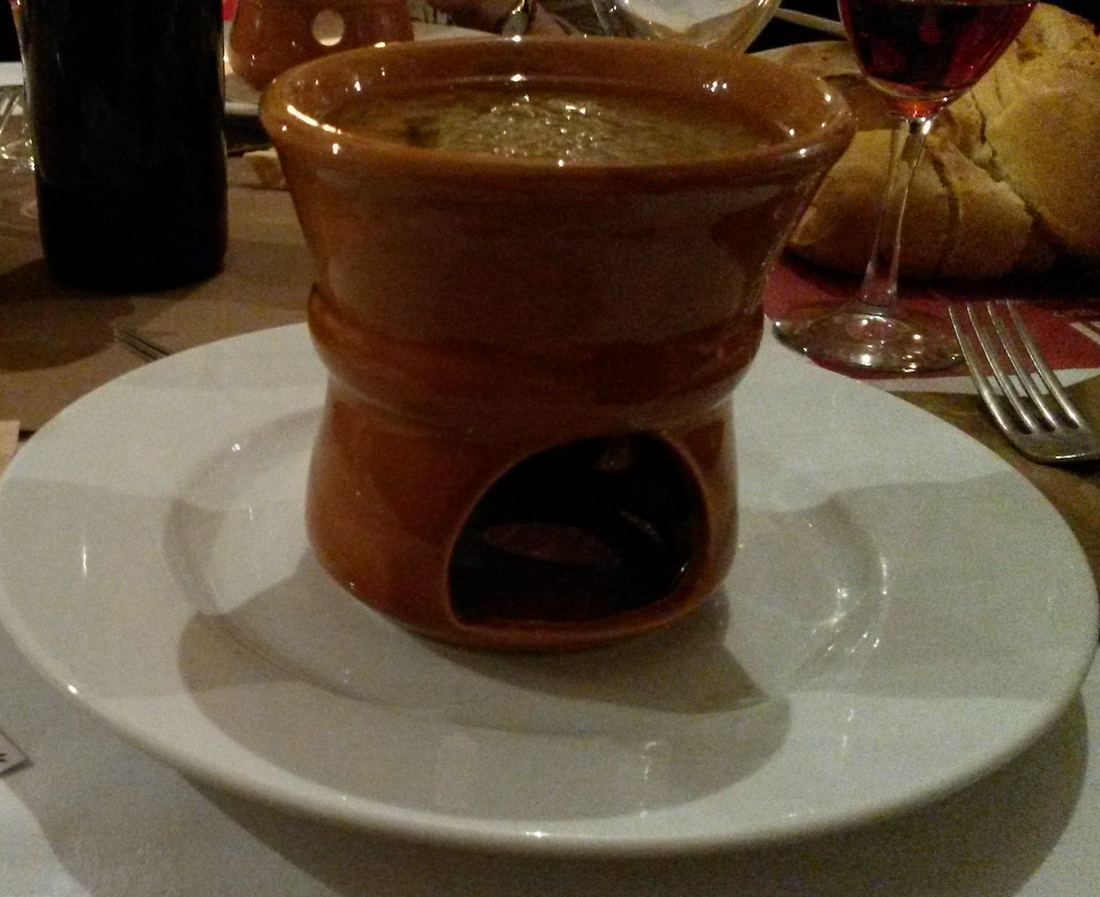
Bagna cauda: a traditional Piedmontese dip
Share
Bagna cauda is a traditional dish from the Piedmont region, specifically associated with the city of Turin. The name translates to "warm bath," reflecting the way the dish is served. It is a warm dip made from garlic, anchovies, olive oil and butter, typically accompanied by a variety of raw and cooked vegetables. This communal dish is rich in flavor and steeped in history, often enjoyed during colder months and special occasions.

Historical background
Bagna cauda has roots that date back to medieval times. Its origins are believed to be linked to the agricultural practices of the Piedmontese people, who relied on locally available ingredients. The combination of garlic and anchovies was likely influenced by the region's proximity to the Mediterranean Sea and the availability of these key ingredients. Over the years, bagna cauda evolved from a peasant dish into a staple at festive gatherings and family meals.
The dish is often associated with the grape harvest season, as it was traditionally prepared during the fall when vegetables were plentiful. It is common for families to gather around the table in a communal setting, dipping vegetables into the warm sauce. This aspect of sharing and togetherness is a significant part of the eating experience.
Ingredients
The primary ingredients of bagna cauda are:
- Garlic: Fresh garlic cloves form the base of the dip, providing its characteristic flavor.
- Anchovies: Salted or cured anchovies add a rich, savory depth. They are usually cleaned and filleted before being incorporated into the dish.
- Olive oil and butter: High-quality olive oil is essential, often enhanced with butter to give the dip a smooth consistency.
-
Vegetables: A variety of vegetables are served with bagna cauda, including:
- Cardoon (a type of artichoke)
- Cauliflower
- Bell peppers
- Carrots
- Celery
- Radishes

Preparation Method
- Garlic and anchovy preparation: Start by peeling the garlic cloves and cutting them in half to remove the green germ. This step helps reduce bitterness. Soak the anchovies in water to tone down their saltiness, then rinse them until desired.
- Cooking the dip: In a saucepan, combine olive oil and butter over low heat. Add the garlic and gently sauté until fragrant. Slowly incorporate the anchovies, stirring until they dissolve and blend into the mixture. The goal is to create a smooth, creamy consistency without browning the garlic.
- Serving: Once the dip reaches the desired consistency, transfer it to a heatproof bowl or a terracotta dish. Keep the bagna cauda warm while serving. Arrange the selection of raw and cooked vegetables on a platter around the dip, providing diners with options to choose from.
Variations
While the basic recipe for bagna cauda remains consistent, variations exist based on regional preferences and personal tastes. Some recipes may include different types of herbs or additional spices to enhance the flavors. In certain areas, cream may be added for a richer texture.
Cultural Significance
Bagna cauda is more than just a dish; it represents the communal spirit of dining in Piedmontese culture. It is common to see families and friends gathering to share the experience of dipping vegetables into the warm sauce, fostering connection and conversation. The dish is typically served during the cooler months, making it ideal for gatherings and celebrations.

Conclusion
Bagna cauda is a dish that encapsulates the essence of the Piemontese culinary heritage. With simple ingredients and a straightforward preparation process, it highlights the local produce of the region while emphasizing communal dining. Whether enjoyed during a festive occasion or a casual family meal, bagna cauda continues to be a beloved tradition, connecting people through its rich flavors and shared experience.






